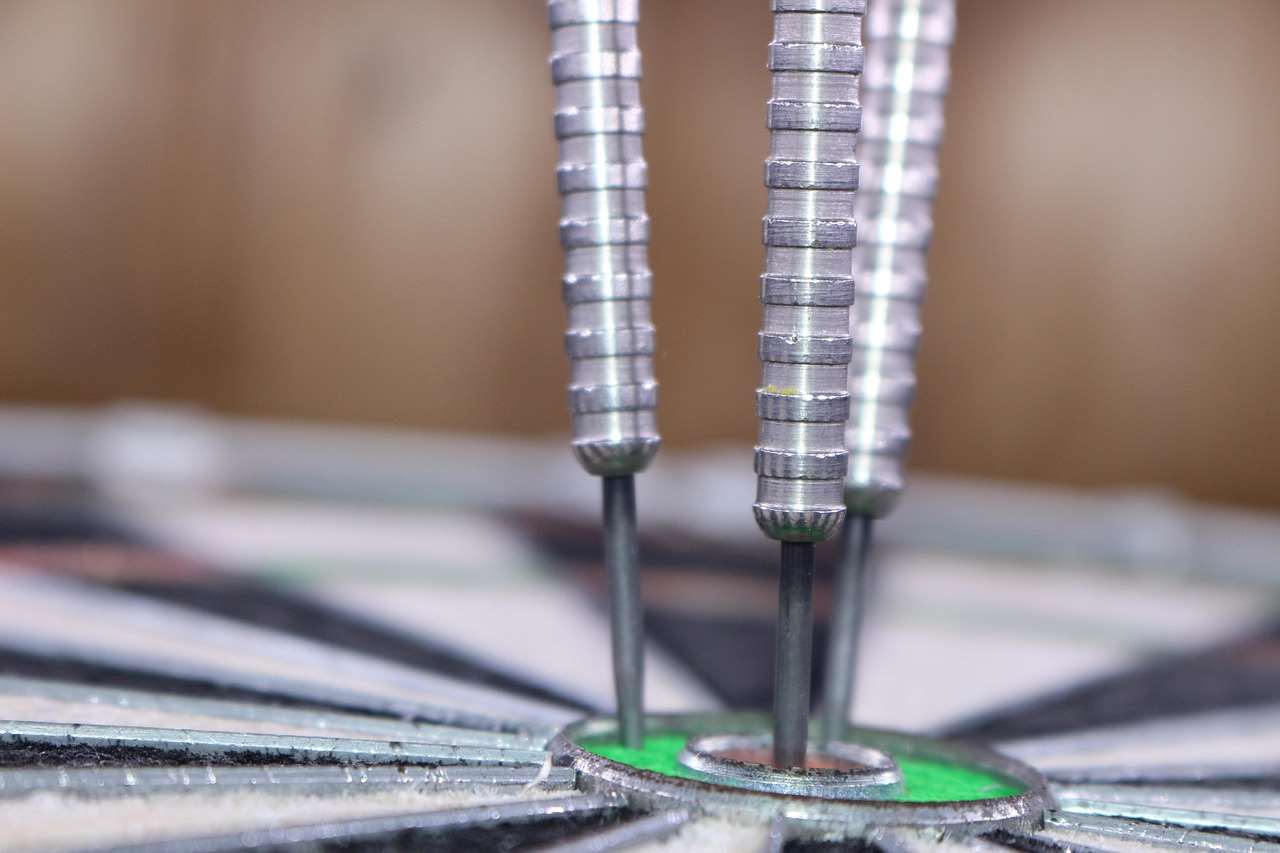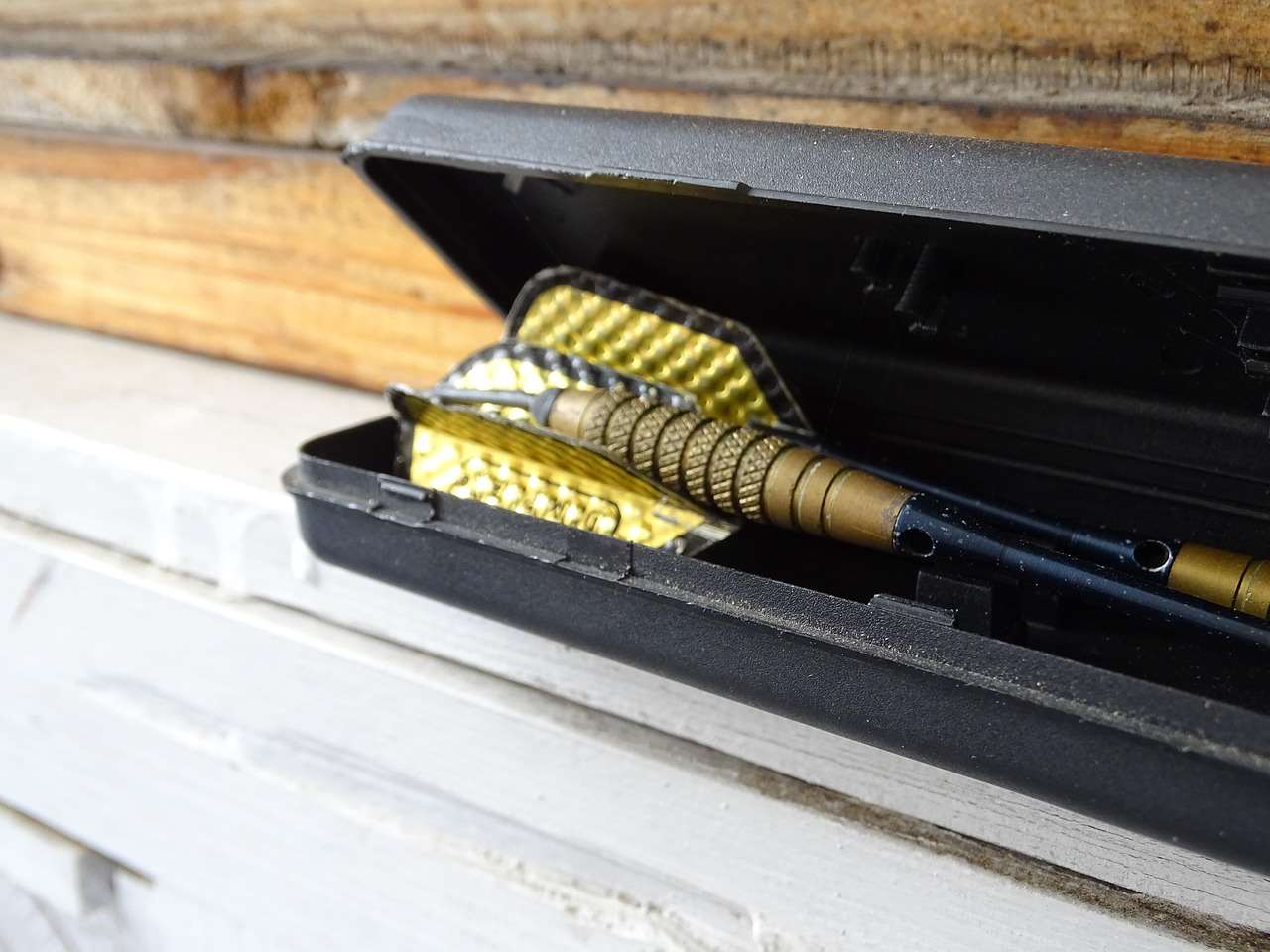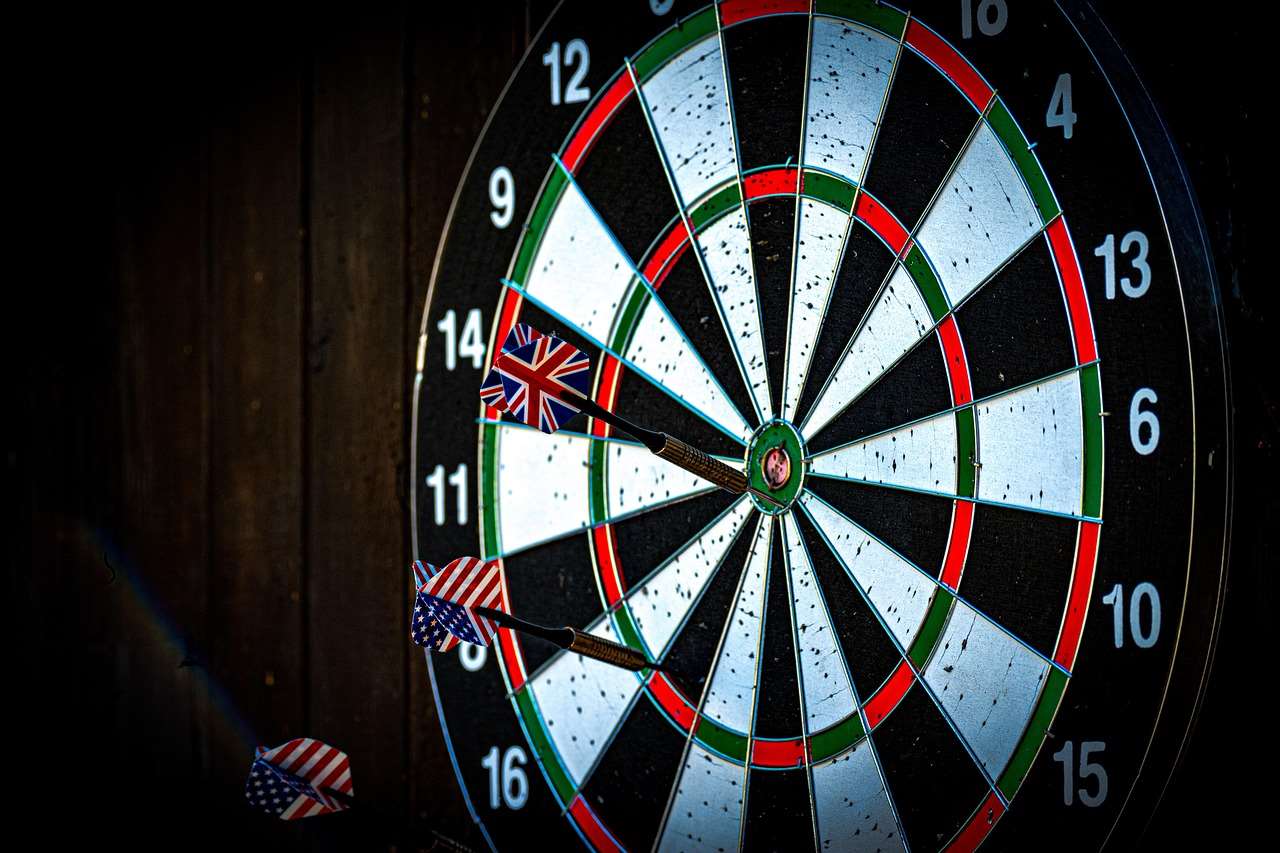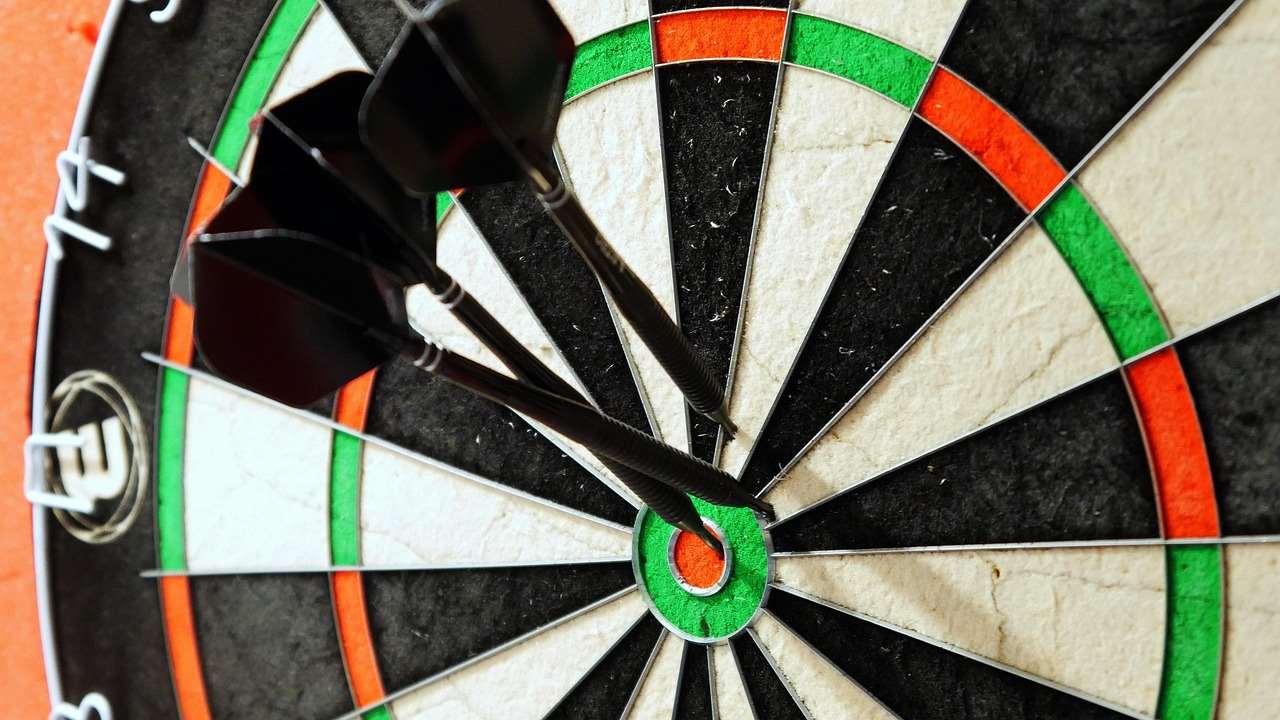Playing 501 darts is a fantastic way to enjoy a competitive and engaging game, but many groups introduce popular house rules for 501 darts explained here to tailor the experience to their skill level and preferences. This article will explore some of the most common and enjoyable variations on the standard 501 darts game, helping you create the perfect darting experience for your next gathering. We will also delve into the reasons behind these adaptations and offer tips for implementing them effectively.
⚠️ Still Using Pen & Paper (or a Chalkboard)?! ⚠️
Step into the future! The Dart Counter App handles all the scoring, suggests checkouts, and tracks your stats automatically. It's easier than you think!
Try the Smart Dart Counter App FREE!Ready for an upgrade? Click above!
Common Starting Rule Variations in 501 Darts
The standard 501 darts game starts with each player having a score of 501, aiming to reach zero by subtracting the value of the darts they throw. However, several popular house rules alter this starting condition, usually to make the game easier or more accessible, particularly for beginners. One prevalent house rule involves allowing players to simply start scoring from the beginning, regardless of whether they hit a double to open. This removes the initial pressure and allows newcomers to get into the game more quickly, making it a more welcoming experience. You can compare this to Basic Darts Fundamentals for Beginners where we simplify the concepts.

Another variation involves starting with a different score altogether. For instance, some groups might choose to play 301 instead of 501. This shorter game is ideal for situations where time is limited, or players want a faster-paced experience. It also reduces the number of throws required, potentially making it more appealing to less experienced players who may struggle to maintain accuracy over a longer game.
Furthermore, some house rules might dictate that only a specific number of darts per turn count towards the score. For example, players may only count the score from their best two darts out of three. This can encourage more aggressive play and increase the chances of achieving higher scores, adding an element of excitement and unpredictability. These adjustments are all about finding the right balance between challenge and enjoyment, ensuring that everyone can participate and have fun.
Starting from a Specific Score Adjustment
Adjusting the starting score is another common way to modify the game. Some players might opt for 401 or even 201 to shorten the game time. This is especially useful when playing with children or individuals with shorter attention spans. It’s a simple change but significantly alters the dynamic of the game.
Popular House Rules for 501 Darts Explained: Ending the Game
The most significant house rule changes often revolve around how the game is finished. In standard 501 darts, a player must reach exactly zero and must do so by hitting a double (a dart landing in the double ring of the board) or the bullseye (which counts as a double 25). This rule can be challenging for novice players, leading to frustration as they repeatedly overshoot or undershoot the required score. Therefore, many popular house rules for 501 darts explained below address this “double out” requirement.
One common variation is to allow players to finish on any number, including a single, without requiring a double. This significantly simplifies the game, making it easier for beginners to reach zero and claim victory. While it removes the strategic element of setting up a double, it prioritizes accessibility and encourages participation.
Another house rule involves allowing players to “bust” their score without penalty on the final throw. In standard rules, if a player throws a dart that would take their score below zero, the entire turn is nullified, and their score reverts to what it was before that turn. Some groups eliminate this penalty, allowing players to continue from the reduced score on their next turn, even if it’s negative. This makes the game more forgiving and reduces the risk of frustrating setbacks.
Variations on the “Double Out” Rule
Several variations exist on the “double out” rule. One is to allow any even number to be hit as a final shot, essentially expanding the potential “out” shots beyond just the doubles ring. Another is to designate a specific number (like 20 or 40) as a permissible “out” shot, even if it’s not a double. These adjustments can make the game feel less restrictive and more fluid.
Handicap Systems and Fair Play
When playing 501 darts with players of varying skill levels, implementing a handicap system can be a great way to level the playing field and ensure that everyone has a fair chance of winning. One common approach is to give less experienced players a head start by deducting points from their starting score. For example, a beginner might start with 401 while a more experienced player starts with 501. This gives the beginner a significant advantage and compensates for their lack of skill.
Another handicap system involves awarding extra points for certain achievements, such as hitting a bullseye or scoring a 180. These bonus points can help less skilled players catch up to more experienced opponents, adding an element of excitement and encouragement. It also incentivizes players to aim for specific targets, improving their accuracy and strategic thinking.

Furthermore, some groups allow less experienced players to have extra throws per turn. For instance, a beginner might be allowed to throw four darts instead of three, giving them more opportunities to score points. This can be particularly helpful for players who struggle with consistency and accuracy. Consider reading more about How to make darts fairer with handicap rules to learn more.
Starting Score Handicap: A Head Start Approach
Giving a less skilled player a lower starting score is a very common handicap method. The point difference can be adjusted based on the skill disparity, ensuring a balanced and engaging game.
Team Play and 501 Darts
501 darts can also be adapted for team play, adding a social and collaborative element to the game. In team games, players take turns throwing darts, with their scores contributing to the overall team score. This fosters teamwork and communication, as players must strategize and coordinate their throws to maximize their team’s chances of success. This concept is especially relevant when considering Creative dart rules for parties and social gatherings.
One popular team variation involves combining individual scores to reach zero. For example, if one player scores 60 points, that amount is deducted from the team’s total score. The next player then attempts to reduce the score further, and so on until the team reaches zero and wins the game. This requires players to work together and communicate effectively, creating a sense of shared responsibility and achievement.
Another team variation involves setting specific targets or challenges for each player. For instance, one player might be tasked with hitting a specific double, while another player focuses on scoring as many points as possible. This allows players to leverage their individual strengths and contribute to the team’s overall strategy. Such modifications enhance the social aspect and provide diverse roles for players to embrace.

Rotating Throwers and Score Keeping
In team play, the rotation of throwers is crucial for fairness. Implementing a consistent order ensures that each player gets an equal opportunity to contribute. Accurate scorekeeping is also essential, as the team’s success hinges on the cumulative scores of its members.
The Impact of Dartboard Quality and Room Setup
While popular house rules can significantly impact the enjoyment of 501 darts, the quality of the dartboard and the overall room setup also play a crucial role. A high-quality dartboard will provide a consistent and reliable playing surface, reducing the likelihood of bounce-outs and inaccurate scores. Investing in a good dartboard is therefore essential for ensuring a fair and enjoyable game.
The room setup should also be carefully considered. The lighting should be adequate and evenly distributed, allowing players to clearly see the dartboard and their targets. The throwing area should be free from obstructions, providing players with ample space to take their shots. Furthermore, the surrounding area should be safe and secure, preventing accidents and injuries. These elements collectively contribute to a more professional and comfortable darting environment. To learn more about adapting game rules, you may want to read Adapting darts rules for beginners.
Consider the space available. You may need to think about Adapting darts rules for small spaces: tips and tricks. This includes modifying the throwing distance and ensuring ample clearance around the board.
Dartboard Maintenance and Lighting Considerations
Regularly rotating the dartboard can extend its lifespan and ensure even wear. Proper lighting, ideally with dedicated dartboard lighting fixtures, eliminates shadows and improves visibility.
Strategic Score Management with House Rules
The strategic element of 501 darts can be further enhanced or altered by implementing specific house rules regarding score management. For instance, some groups might introduce a rule that penalizes players for overshooting a double, even if they are playing without the “double out” requirement. This encourages more careful and calculated throws, rewarding accuracy and precision. It also adds a layer of complexity to the game, as players must constantly assess the risks and rewards of each throw.

Another strategic element involves “setting up” a favorable double for the final throw. Even with modified rules, experienced players often aim to leave themselves with a manageable double number, increasing their chances of finishing the game. Mastering this skill requires practice, patience, and a keen understanding of the dartboard’s layout. Therefore, even with popular house rules for 501 darts explained here, strategic thinking remains essential.
Furthermore, the element of psychological warfare can also come into play. Players might attempt to distract or intimidate their opponents, using verbal cues or body language to gain a mental advantage. While such tactics are generally frowned upon in more formal settings, they can add a fun and competitive edge to casual games.
Risk Assessment and Tactical Play
Players should carefully assess the risks and rewards of each throw, considering their current score, the available targets, and their own level of accuracy. Tactical play involves deliberately setting up favorable opportunities for future throws, maximizing the chances of achieving high scores and winning the game. Using Simplified 501 game rules for novice players can also help.
Adapting House Rules for Different Skill Levels
The key to creating enjoyable house rules is to tailor them to the specific skill levels of the players involved. For beginners, simpler rules that prioritize accessibility and reduce frustration are generally the best option. As players gain experience and confidence, more complex rules can be introduced to add challenge and strategic depth. It’s important to be flexible and willing to adjust the rules as needed, ensuring that everyone continues to have fun and feel engaged.
It’s also important to consider the personalities and preferences of the players involved. Some players might enjoy the competitive aspect of the game, while others might prefer a more relaxed and social experience. By taking these factors into account, you can create a set of house rules that caters to everyone’s needs and ensures that the game is enjoyable for all.

Remember to clearly communicate the rules before the game begins, avoiding any confusion or misunderstandings. A written list of the popular house rules for 501 darts explained can be helpful, ensuring that everyone is on the same page and that the game is played fairly.
Dynamic Rule Adjustments During Play
Don’t be afraid to adjust the rules mid-game if it becomes clear that they are not working as intended. Open communication and a willingness to compromise are essential for ensuring that everyone continues to enjoy the experience. This often relies on Modifying rules for mixed-level dart players.
Conclusion
By understanding and implementing these popular house rules for 501 darts explained in this article, you can transform a standard darts game into a tailored experience that caters to your specific needs and preferences. Whether you’re looking to simplify the game for beginners, add challenge for experienced players, or create a more social and collaborative experience, the possibilities are endless. Remember to communicate clearly, be flexible, and prioritize fun above all else. So, gather your friends, customize your rules, and get ready to enjoy a truly unique and engaging game of 501 darts. Why not share this article with your friends and see what house rules they might suggest?
Hi, I’m Dieter, and I created Dartcounter (Dartcounterapp.com). My motivation wasn’t being a darts expert – quite the opposite! When I first started playing, I loved the game but found keeping accurate scores and tracking stats difficult and distracting.
I figured I couldn’t be the only one struggling with this. So, I decided to build a solution: an easy-to-use application that everyone, no matter their experience level, could use to manage scoring effortlessly.
My goal for Dartcounter was simple: let the app handle the numbers – the scoring, the averages, the stats, even checkout suggestions – so players could focus purely on their throw and enjoying the game. It began as a way to solve my own beginner’s problem, and I’m thrilled it has grown into a helpful tool for the wider darts community.